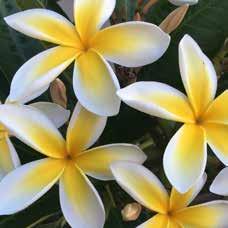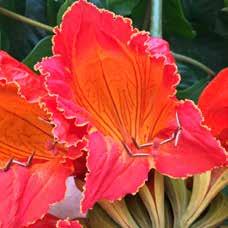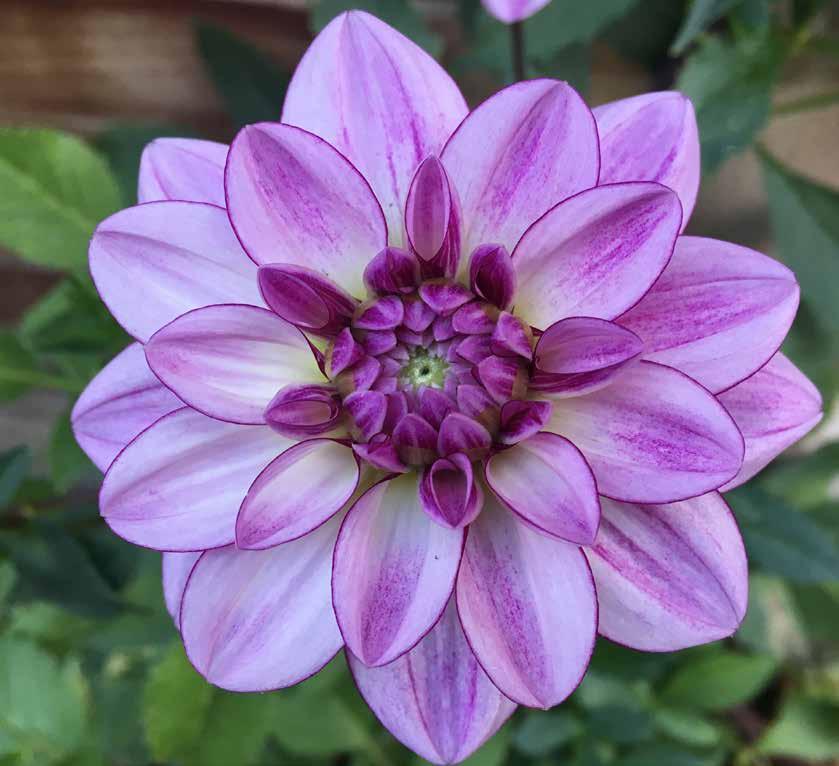
3 minute read
Fall in the Garden


Advertisement
Echinacea Plumeria African tulip tree
Although the weather is still summer-like, September is the beginning of fall and a good time to clean out the garden and assess what worked and what didn’t. There are a few things that need to be addressed over the next few months to keep your plants happy, and it’s also time to start planning for next year.
SEPTEMBER ✿ Don’t water your Christmas cactus for the next month and a half to help set buds on your plant. It’s not an exact science but hopefully this will have your plant in bloom for the holidays.
✿ Bulbs are starting to appear at local nurseries so get your favorites while they are in stock to be planted in the next couple of months. Try these wonderful drought-resistant bulbs and corms from South Africa: freesia, babiana, crocosmia, sparaxis, tritonia, watsonia and ixia. Plant bearded iris rhizomes in areas that get at least a half-day sun. Other spring-flowering bulbs such as daffodils are planted later when weather cools down a bit.
✿ When the weather is hot and dry, it is important to keep your citrus evenly watered or the result can be split fruit.
✿ This month and next are big pruning months. It’s time to really clean out drought-tolerant plants by pruning heavily as they finish out their last few months of spectacular growth. Cut back by at least half, cleaning out deadwood while you are clipping. Clearing them out now will give them a good head start for winter and the new growth will be so much more vigorous.
OCTOBER ✿ Rake leaves and other garden detritus to prevent disease and remove hiding spots for garden pests. Also, remove any old fruit from trees. Disease and pests can over-winter in rotting vegetation so clean it up! Especially important: the fungus that causes petal blight in azaleas and camellias overwinters in fallen flowers, leaves and old mulch. To decrease the chances of blight, remove all the debris under the plants and apply new mulch.
✿ Change up the fertilizer on your cymbidium orchids, raising the phosphorus levels to promote blooming. You have some flexibility and a fair amount of control over when your cymbidiums will bloom.
NOVEMBER ✿ As we go into colder months, most plants are going into a resting time. A general rule of thumb regarding fertilizing plants now is be mindful of fertilizers containing too much nitrogen, which encourages new, tender growth that will damage easily in the cold. Don’t fertilize wildflowers, tropicals, roses, bromiliads, fuchsia, dahlias, epiphyllum or warm season lawns because they are in their

Dahlia
dormancy and it’s not time to promote growth.
✿ Take a look at your trees and get them trimmed if needed. When the ground is really wet and the wind is blowing hard, trees of all sizes can be uprooted, so it is important to open them up so the air can blow through during windy conditions. Find a qualified tree trimmer to do this job. Don’t forget to stake your small trees, but not too tightly, so they can bend a little with the wind and develop strong trunks.
✿ Resist the temptation to prune your hydrangeas. They don’t look great, but hydrangeas bloom on one-year-old stems, so pruning would disrupt the blooming process. If your hydrangeas are the pink variety and you want to try to color them blue or lavender, apply aluminum sulfate now for the spring bloom.
PLANTING TIP When planning your fall garden, remember that the angle of the sun changes from spring-summer to fall-winter. Areas of the garden that were in full sunlight during the summer may be in partial or full shade during the fall and winter, so plan(t) accordingly. Happy Gardening!


